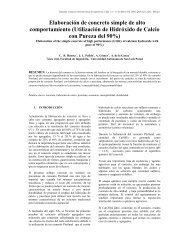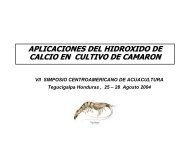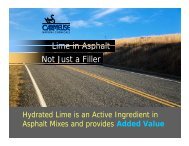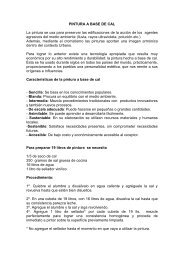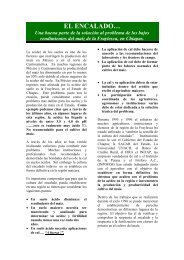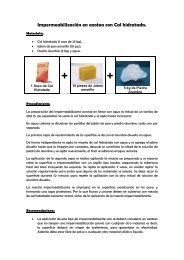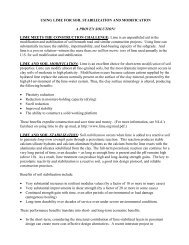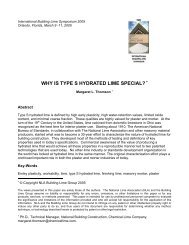Land Contamination: Technical Guidance on Special Sites: Acid Tar ...
Land Contamination: Technical Guidance on Special Sites: Acid Tar ...
Land Contamination: Technical Guidance on Special Sites: Acid Tar ...
You also want an ePaper? Increase the reach of your titles
YUMPU automatically turns print PDFs into web optimized ePapers that Google loves.
The chemicals listed in Table B.1, can be grouped into several categories, as follows:• aliphatic hydrocarb<strong>on</strong>s;• aromatic hydrocarb<strong>on</strong>s;• phenols;• metals;• organic acids;• sulph<strong>on</strong>ated hydrocarb<strong>on</strong>s; and• gases such as hydrogen sulphide, sulphur dioxide and methane.However, the chemicals tend to form a dense mixture in which pure compound physicochemicalproperties do not apply (due to matrix effects).The identity of n<strong>on</strong>-tar related chemicals can vary greatly, although polychlorinated biphenyls(PCBs) are a comm<strong>on</strong> additi<strong>on</strong>al c<strong>on</strong>taminant (presumably co-disposal of oily wastes).Where the acid tar disposal area was located at the source of producti<strong>on</strong>, the other materialsmay be expected to be process or plant-related (other oils, demoliti<strong>on</strong> wastes, etc.). However,a wider range of wastes may be found where tars were disposed of at general tips. These maybenefit the c<strong>on</strong>tainment of the acid tars by providing a degree of retardati<strong>on</strong> of solublecomp<strong>on</strong>ents due to absorpti<strong>on</strong> processes.3.4 Breakdown ProductsSome breakdown by natural biodegradati<strong>on</strong> will occur and can result in producti<strong>on</strong>, am<strong>on</strong>gother compounds, of hydrogen sulphide, sulphur dioxide and methane. Generally, rates ofbiodegradati<strong>on</strong> within the main disposal area will be limited by toxic effects <strong>on</strong> bacteria (fromhigh c<strong>on</strong>centrati<strong>on</strong>s of c<strong>on</strong>taminants and low pH). However, at the edges, more microbialacti<strong>on</strong> is likely. Although weathering is likely to release sulphur dioxide and reduce aciditysomewhat (release of sulphur dioxide (as “puffs”) is an issue for remediati<strong>on</strong>), there appearsto have been little study of other breakdown products. However the higher molecular weightpolycyclic aromatic hydrocarb<strong>on</strong>s (PAHs) are likely to be relatively resistant to degradati<strong>on</strong>.3.5 Mobile CompoundsThe chemicals liable to migrati<strong>on</strong> in or associated with groundwater are principally those inthe aqueous phase (phenols and derivatives, dissolved sulphuric acid, BTEX compounds,organic acids) and free oils. The high molecular weight asphaltenes (tarry substances) have alow solubility and remain relatively immobile. High acidity levels surrounding the lago<strong>on</strong>swill also tend to mobilise metals such as ir<strong>on</strong> from naturally occurring mineral deposits.R&D <str<strong>on</strong>g>Technical</str<strong>on</strong>g> Report P5-042/TR/04 19



